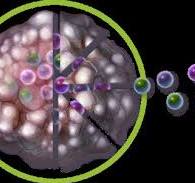Malign melanom için yeni tedavi seçeneği olarak Lifileucel (tümöre karşı hassaslaştırılmış T Hücre nakli)
Malign melanom için yeni tedavi seçeneği olarak Lifileucel (tümöre karşı hassaslaştırılmış T Hücre nakli)
Maling melanom cilt tümörlerinde en sık görülen ve agresif seyreden bir tümördür.
Ultroviole ışınlarının yoğun olduğu bölgelerde sık görülür. Neoantijen çeşitliliği ve tümör mutasyon yükü yüksek olduğu için genellikle immünoterpiye iyi yanıt vermektedir.
Ayrıca BRAF mutasyonu bu malignitede sık görülür ve BRAF inhibitörleriyle bu kanser türünde iyi sonuç elde edilebilmektedir
Bu etkili tedavilerle maling melanom hastalarının nerdeyse yarısı 5 yıldan fazla yaşamaktadır.
İmmünoterapi ve BRAF pozitif olanlarda, BRAF inhibitörleri sonrası çok etkili tedavi seçeneği şimdiye kadar bulunmamaktaydı.
Amerika Birleşik Devletleri Gıda ve İlaç Dairesi (FDA) tedavi seçeneği kalmamış maling melanom hastalarında Lifileucel adlı tedaviyi bir seçenek olarak onayladı.
Lifileucel, kanser dokusuna karşı aktifleşmiş sitotoksik T hücrelerini (CD8-T) hücre kültürlerinde uygun sitokinler eşliğinde çoğaltarak, otolog T hücre transplantasyonundan oluşmaktadır.
Bu tedavi seçeneği ile yaklaşık %31,5 oranında yanıt alınması ve yanıt derinliğinin uzun olması ile ilk defa solid tümörlerde T-hücreli otolog transplantasyon yararı gösterilmiş oldu.
Tedavi öncesi hazırlayıcı kemoterapi gerekmesi ve tedavi süresince yüksek İL-2 gereksinimine bağlı gelişen yan etkilerin yönetimindeki zorluk ve maliyet bu tedavideki en büyük iki handikaptır.
Kayanak
FDA Grants Accelerated Approval to Lifileucel for Unresectable or Metastatic Melanoma
By The ASCO Post Staff
On February 16, the U.S. Food and Drug Administration (FDA) granted accelerated approval to lifileucel (Amtagvi), a tumor-derived autologous T-cell immunotherapy, for adult patients with unresectable or metastatic melanoma who were previously treated with a PD-1 blocking antibody, or, if they have BRAF V600 mutation–positive disease, a BRAF inhibitor with or without a MEK inhibitor.
C-144-01 Trial
Safety and efficacy were evaluated in the global, multicenter, multicohort, open-label, single-arm C-144-01 trial (ClinicalTrials.gov identifier NCT02360579) in previously treated patients with unresectable or metastatic melanoma who had previously been treated with at least one systemic therapy including a PD-1–blocking antibody, and if BRAF V600 mutation–positive, a BRAF inhibitor with or without a MEK inhibitor. Among 89 patients who received lifileucel, 2 patients were excluded because the product did not meet specification, and 5 patients were excluded due to product comparability.
Lifileucel was administered following a lymphodepleting regimen consisting of cyclophosphamide at 60 mg/kg daily with mesna for 2 days followed by fludarabine at 25 mg/m2 daily for 5 days. Three to 24 hours after infusion, patients received IL-2 (aldesleukin) at 600,000 IU/kg every 8 to 12 hours for up to six doses in order to support cell expansion in vivo. The median administered lifileucel dose was 21.1 × 109 viable cells. The median number of administered IL-2 (aldesleukin) doses was six.
The main efficacy outcome measures were objective response rate and duration of response. The median time to initial response to lifileucel was 1.5 months. Objective response rate was based on 73 subjects who received lifileucel within the recommended dosing range of 7.5 x 109 to 72 x 109 viable cells; objective response rate was 31.5% (95% confidence interval [CI] = 21.1%–43.4%) and median duration of response was not reached (95% CI = 4.1 months to not reached).
The prescribing information for lifileucel contains a Boxed Warning for treatment-related mortality, prolonged severe cytopenia, severe infection, cardiopulmonary, and renal impairment. The most common adverse reactions (occurring in ≥ 20% of patients) in order of decreasing frequency were chills, pyrexia, fatigue, tachycardia, diarrhea, febrile neutropenia, edema, rash hypotension, alopecia, infection, hypoxia, and dyspnea.
The recommended lifileucel dose is 7.5 x 109 to 72 x 109 viable cells.

